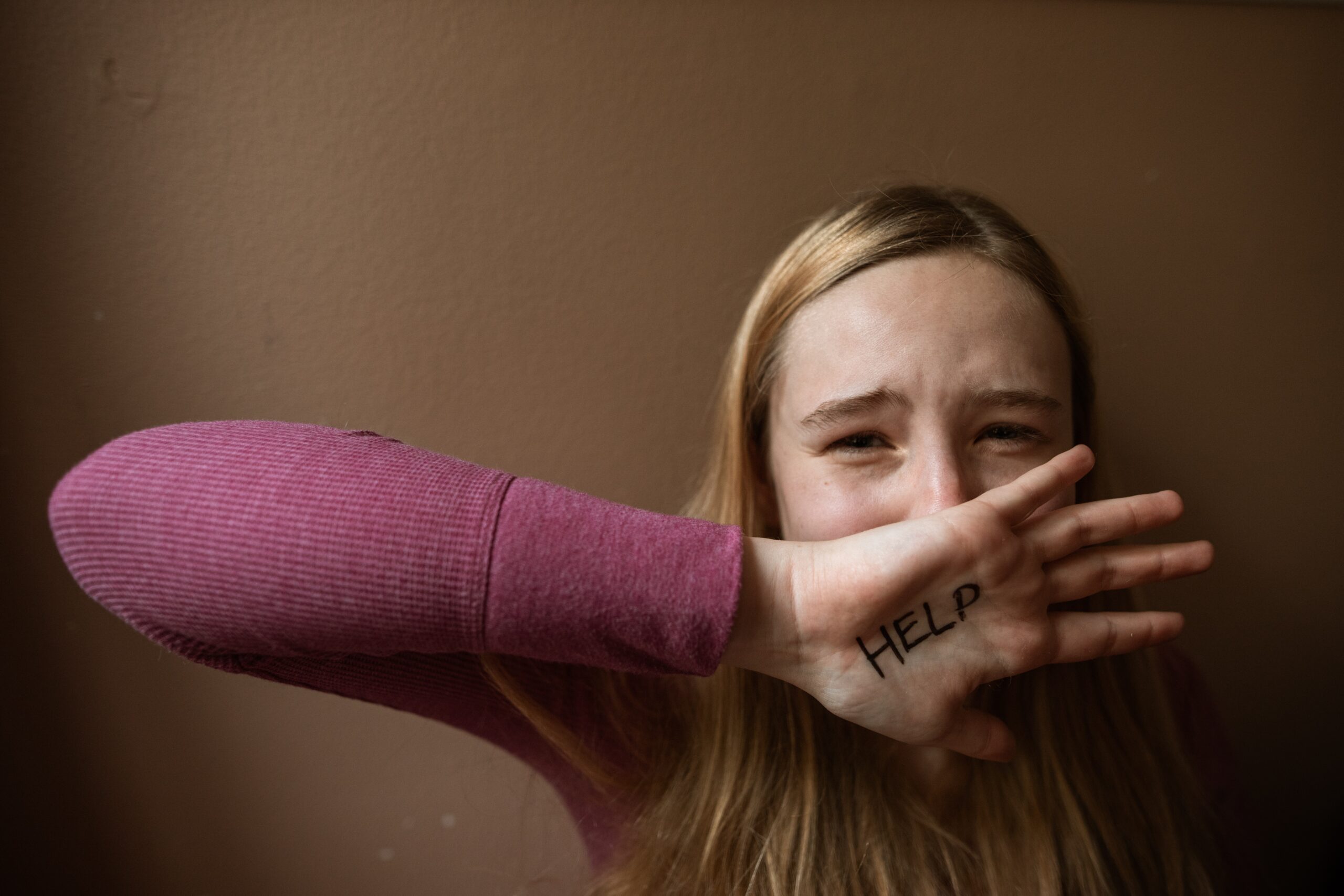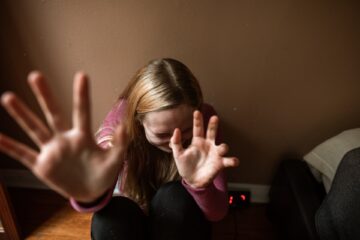![]()
Introduction:
Child Sexual Abuse termed as C.S.A. basically defined by World Health Organisation as the participation of a child in all sexual activities that are not understandable to him or her and because of lack of understandability they were not even informed or consent to and to which the child is unable to give consent or not mentally prepared for or that violates the laws or set of rules on which society runs.[1] C.S.A. generally includes an arrangement of sexual activities like twiddling, inviting a child let him be involved in sexual activities like to touch or be touched sexually, sexual intercourse, immodesty, involving a child in prostitution activities or pornography and also the online child flirtatious activities by cyber predators. C.S.A. has been considered as one of the gravest problems which are in a quite big magnitude throughout the world. The recent study has been conducted on the issue which was about 55 studies that have been done with the participation of 24 countries and they basically found more heterogeneous results regarding the definition and measurement of C.S.A. and finally concluded that the rates of males in C.S.A. are about 8% to 31% for females and 3% to 17% of males.[2]
India’s Condition on Child Sexual Abuse
C.S.A. is not a new challenge in India, it has its historical routes and it has been a hidden problem but the truth is it has been largely ignored by the public as well as by justice system of the country. According to the facts, India has been the second most crowded country in the world and according to the census that has been conducted in 2011 it is the home to world’s 17% of the population and most importantly the 19% of world’s children use to live in India, and this involves almost 42% of India’s population and the point that shocks everyone is almost 50% of these are in extremely bad conditions and are in need of care and protection. The UN declaration helped a lot in meanwhile conditions as by signing in United Nation Convention on Rights of Child, 1992 promise was made by India to protect its children from every form of sexual exploitation. This convention puts the involvement of serious rules which determines that there’s no inducement or coercion or bullying of the child that force him to participate in sexual activities.
And the recent cases of female infanticides, child rapes forced government to issue guidelines for the conduct of research that shows the result of extent and the nature of child abuse within India. And the results were as surprising as one could ever imagine, the government authorized survey found that there are more than 53% of children in India who are the victim of sexual abuse or assaults. And the major fact revealed through this research was the majority abuse and assaults were done by close relatives or people of accused to whom the child had trust or believe and the point that is more grief is these cases were registered due to family and social pressure. The variation that has been in the picture was the difference in a number of cases between rural and urban areas.
This is proved that female child is much more endangered or unsafe or unprotected to sexual assaults and abuse, but the shocking results are even male child is in high percentage faced the sexual abuse. This was also a fact that the problem of sexual abuse is much more related to or works in parity with the problem of poverty, basically occurs in families covering socioeconomic or religiously backward classes. We can say the various factors that facilitate C.S.A. are poverty, overcrowded family arrangements, lack of education, and no recreational facilities in the families. The effect of child abuse is the result of all above-mentioned activities, its effect might be little exaggerated or intensified but these factors are the basic problem and need is to prevent them.
Through various studies it has been concluded that sexually abused children are let down by miscarriage of criminal justice system in the country as the system prevails doesn’t able to address the one’s grievances or problems or social impact associated with the abuse.[3] Only 3% of offences covered under C.S.A. are reported or revealed. This will be a bitter truth that C.S.A. is an underreported as this includes the mentality of social stigma between people shame and this becomes more common when the offence has been committed within the family or by a family member. This shame leads to encouragement of this heinous offence and this act is not new in India, basically, this is a collectivist culture of the other Asian countries within which individual experience and pain supersede the shame that will associate to the family.
POCSO Act and its Various Salient Features
The POCSO Act, basically enacted within the purview of Constitution of India just because as it helps to penalise a range of acts as child rape, sexual assault, pornography, and sexual harassment which is with a child less than the 18 years of age. This legislation helped the country to develop the Special Courts that will ease speedy trials and all cases related to child sexual abuse. And the passing of this Act has turned out to be one of the biggest steps in procuring rights of the child. This Act initially involves the rigorous punishments which are equally divided according to the gravity of an offence. Punishments have its range from simple to rigorous in an offence also. There are several provisions related to a fine as well which is decided by honourable courts in the purview of their discretion. The offence against the child when committed by the person who is in the trust parameter of the child or by any person of security forces or police or any public servant will be regarded as aggravated.
POCSO Act involved the biggest implementation after the case of Nirbhaya which were, there’s no mention of it does not penalise to penile penetration. Alternatively, it made wide the particular offence which is termed as penetrative sexual assault under the particular act which includes all objects like oral sex, as well as insertion of any objects into vagina, anus or mouth in the light of penile penetrative sex.[4] This was made clear in the landmark judgement of State v. Pankaj Choudhary[5] wherein 2011 High Court of Delhi made liable the person only with infuriating the modesty of a woman by penetration of anus digitally and vagina of 5 years old but then digital penetration was not an offence mentioned in Indian Penal Code. However, the judgment was delivered before the enactment of the POCSO Act. And in penetrative assault under POCSO, 2012 has increased its protection towards children.
POCSO Act penalises a set of behaviours as the attempt of assault or sexual assault and penetration.[6] This must be noted that the acts which include exasperating penetrative or non-penetrative is being defined as more serious offences and involves high penalties, especially when committed by specified penetrators in the specific conditions or situations or if it has caused the serious impact on the victim.[7] These specified people include those who are in set authority or in certain positioned power with respect to the child if the person committed such offences shares the house with the child or victim, in all such grievous conditions like gang rape, serious bodily harm, threatening them with the deadly weapons, or corrosive substances, assaulting any child who is under 12 years, against whom who is mentally or physically challenged, caused the child to be pregnant, infecting child with deadly diseases like HIV, assaults grievous in nature or repetitive or causes public degradation. This is the moment of proud that W.H.O has found the definition to be very descriptive and covers almost every scenario that could be possible as these provisions were constituted keeping in mind the entire challenges child could face and the virtuous of children.
Implementations Needed in POCSO Act
So, the act has already faced many unseen challenges in all its creation and implementation. Practically its implementation is a whole big process and then when it comes to its enforcement is a whole different process. According to National Crime Records Bureau cases to be registered in POCSO is continuously raising day to day with the heads of gang rape, but the reality is the rate of conviction is just 4%, absolution is 6% and the rate of pendency is 90%. Some of the changes required in its enforcement are-
1. Administrative Pitfalls
According to the specific provisions mentioned in POCSO Act, it will be the duty of State Governments with the consultation with Chief Justice of High Court should appoint Session Court as the specific Court to be appealed with all offences that facilitate speedy trials.[8] But it has been also provided in POCSO that if Sessions Court will be the termed as children’s court in the commission of protection of child rights act or in case any specific or special court will be assigned under any other law, it will be also contemplated as a special court under the POCSO. But even after having such a direct form of directions, every district has ignored this continuously. And one of the basic reasons on the ineffectiveness of POCSO is to fail in setting up of Special Courts deals with child sexual abuse in every district of India. Setting up these courts is one of the basic necessities in this act, and to its lack of implementation, there is already delay in disposal and pendency of cases.
2. Cases not being handled by Expertise
Situations were being worse when it was settled out that the judges who are appointed to handle cases related to C.S.A. are not any experts nor they were given any special training by the respective state governments and nor they study the laws involved in cases like these. And through the reports and report of several cases states that the particular cases were considered as a burden and though the cases were not dealt efficiently or which could work effectively.
The example through which we can depict what lack of expertise can cause in reality, basically this can be seen in the judgment passed by a Special Court also termed as sessions court situated in Thane, Maharashtra and was a very recent incident of 22nd December 2016 where the court has issued a perjury notice against the minor girl of one 16 years of age, the case was registered under the POCSO Act where the girl was reportedly being raped by her father. She was being testified against her father in the examination-in-chief and with all such aspects during the final stages of cross-examination done by the defence she was termed under hostile. And the worst part of this was, the trial strategy was exactly similar to the rape trials, just like it would have been happening with adult women, where several attempts were also made to characterise her and make her statement’s credibility be zero by questioning her sexual history and moral character in the middle of the court. This is the scenario the medical, judicial and law enforcing staff is completely uneducated about dealing with children in all these matters. There should be a child-friendly atmosphere throughout the proceedings and must give the utmost importance to the principle which is “in the best interest of the child”.[9]
Therefore it’s an urgent need arise in front of our society to educate medical, judicial and all law enforcing staff or agencies about the POCSO Act. It will be the biggest and most important step could be taken to protect children which will give thorough care to the future of the country.
There are some important cases which changed the whole purview to deal with cases involved sexual abuse-
In Sakshi v. Union of India[10], Sakshi has filed the writ petition to broaden the scope of rape cases involving the children, specifically when the child is abused by the insertion of objects into the vagina or inserting male organ in the body parts such as anus or mouth. The Supreme Court in the case rejected the Public Interest Litigation but issued some important guidelines related to the trial of rape and sexual abuse with children, and termed it as the Sakshi guidelines-
- Screen or the arrangement should be made where victim or witnesses do not see the face of the accused.
- Questions in cross-examination from the part of accused, it relates directly to the incident must be submitted to Presiding officer in written who may ask them in the language that is clear and not embarrassing.
- Victims of child abuse or rape should be provided with sufficient breaks when required during the testimony.
In Mathura Rape case[11] on 15 September 1978 basically it was an incident of custodial rape in India on 26 March 1972, wherein Mathura, a tribal girl who was a minor at the time, was allegedly raped by two policemen on the compound of Desai Ganj Police Station in Chandrapur district of Maharashtra. After the Supreme Court acquitted the accused, there were public protests, which eventually led to amendments in Indian rape law via The Criminal Law (Second Amendment) Act 1983 (No. 46).
Conclusion
Sexual abuse to a child is a whip of our society and though the Act was introduced in 2012. But this must be understood by every citizen of the country that no law can show its effect positively until and unless done efficiently and effectively. Unless the synchronised actions and the essence of integrity work in parity nothing can be implemented. What we need is a multidimensional approach and to make it work, the responsibility comes in the hands of state governments, police departments, judiciary and the medical staff to impose the act and respond frequently in the cases urgently and with empathy.
And the question of a speedy trial can only be addressed when the judges, staff, defence, prosecution and police coordinate with the court. In the same way, it is an urgent need that doctors must be trained to collect proper and right samples as evidence while working to determine forensic report of child victim suffered from sexual abuse. While comparing to some past years there’s an increase in cases being reported and this all happened with the increase in awareness which was only able to be done through training and several awareness programs and all this would have not been possible without the help of NGO’s and police department. And now it’s time for us to develop and speed up the investigation process and the trials for the survivor in the court.
References:
[1] World Health Organisation. Report of the consultation on child abuse prevention (WHO/HSC/PVI/99.1). Geneva (Switzerland): World Health Organisation, 1999.
[2] Barth J, Bermetz L, Heim E, Trelle S, Tonia T. The current prevalence of child sexual abuse worldwide: a systematic review and meta-analysis. International Journal of Public Health.
[3] Putnam FW. Ten-year research updates review: child sexual abuse. Journal of the American Academy of Child And Adolescent Psychiatry. 2003.
[4] Section 3 of the POCSO, 2012.
[5] Delhi High Court Order dated August 17, 2011 in CRL. Appeal No. 813/2011.
[6] Section 7 of the POCSO, 2012.
[7] Sections 5 and 9 of the POCSO, 2012.
[8] Section 28 (1) of the POCSO, 2012.
[9] Section 22 (2) of the POCSO, 2012.
[10] Sakshi v. Union of India, (1999) 6 SCC 591.
[11] Tuka Ram and Anr v. State Of Maharashtra 1979 AIR 185, 1979 SCR (1) 810.



0 Comments